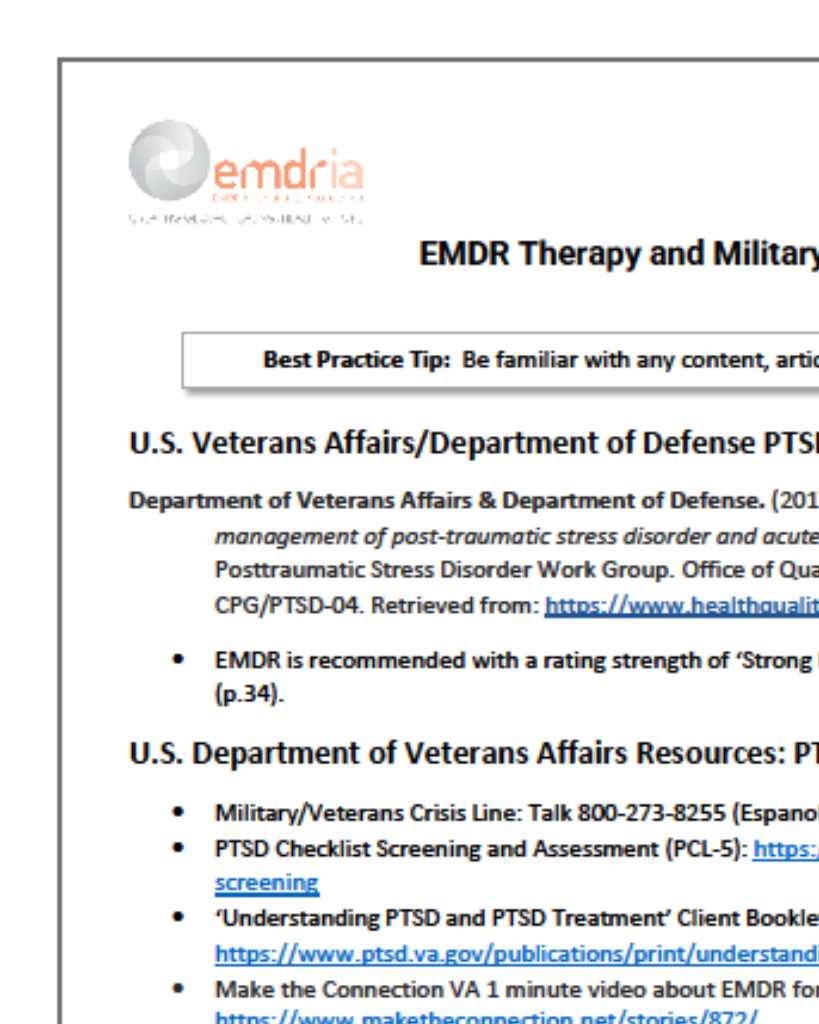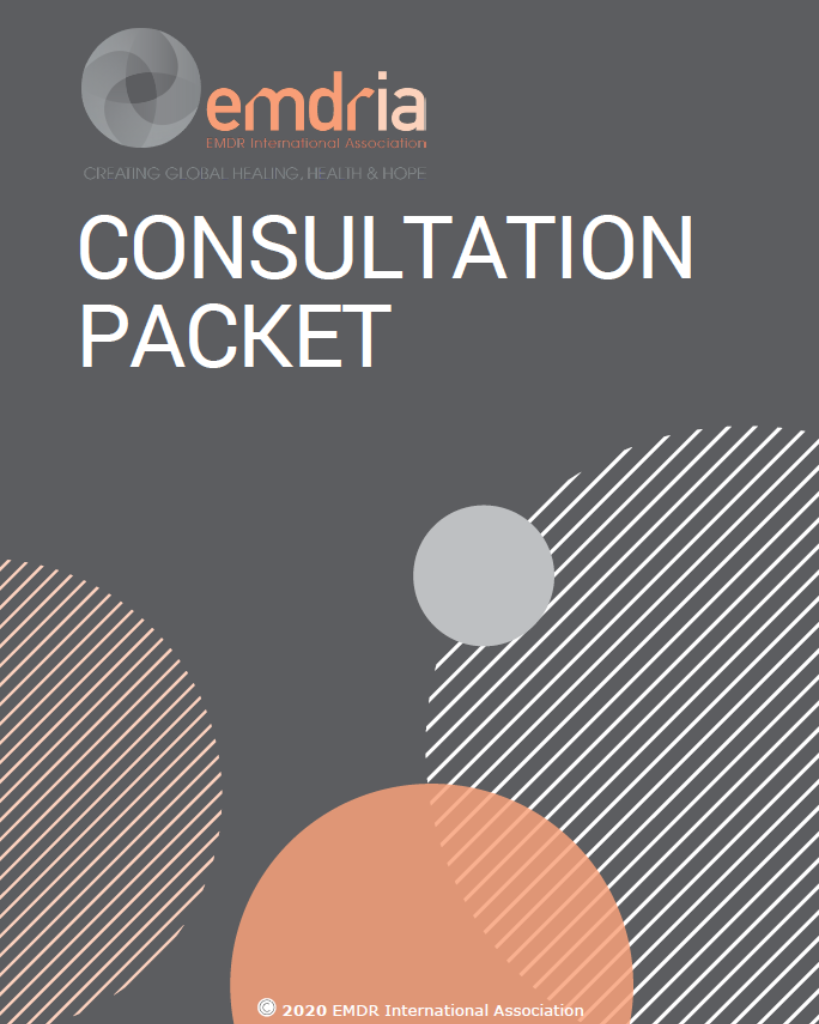Eye movement desensitization and reprocessing therapy (EMDR) with children and adolescents, 2nd edition
This chapter describes the utilization of EMDR therapy with child and adolescent populations.
Chapter Abstract
“Eye movement desensitization and reprocessing (EMDR) is an evidence-based psychotherapy approach for the treatment of adults, adolescents, and children suffering from symptoms and problems related to single-incident or complex trauma. EMDR therapy is a three-pronged protocol that brings past trauma to adaptive resolution, eliminates present-day triggers, and develops positive templates for future functioning. It involves eight standardized phases that include the application of bilateral eye movements or other forms of bilateral stimulation. It can address a wide range of experiences, including single incident traumas, trauma-related to war or natural disasters, abuse, and adverse experiences such as rejection, marginalization, and discrimination. Because it is a client-centered approach and can be integrated with other therapies as needed, EMDR can be adapted to engage children and adolescents, including children with special challenges such as complex trauma, high-risk behaviors, autism, intellectual disability, and family system issues. Possible adaptations include simplified instructions, playful methods of bilateral stimulation, expression of thoughts and feelings through drawing or sand tray, use of a trauma narrative, and integration with family therapy.”
—Description from publisher
Chapter Access
Purchase Required
Wesselmann, D., Settle, C., Mevissen, L., & Shapiro, F. (2025). Eye movement desensitization and reprocessing therapy (EMDR) with children and adolescents. In M.A. Landolt, M. Cloitre, & U. Schnyder (Eds.), Evidence based treatments for trauma-related disorders in children and adolescents, 2nd edition (pp. 343-371). Springer. https://doi.org/10.1007/978-3-031-77215-3_13
Print ISBN: 978-3-031-77214-6
Online ISBN: 978-3-031-77215-3
About the Book
“The second, completely revised and updated edition of this handbook presents the current evidence-based psychological treatments for trauma-related disorders in childhood and adolescence. In addition, it provides clearly structured, up-to-date information on the fundamental principles of traumatic stress research and practice in this age group, covering epidemiology, developmental issues, pathogenetic models, diagnostics, and assessment. Each of the chapters on treatment, which form the core of the book, begins with a summary of the theoretical underpinnings of the approach, followed by a case presentation illustrating the treatment protocol session by session, an analysis of special challenges typically encountered in implementing this treatment, and an overview of the current evidence supporting the treatment approach. An innovative new section has been added to address the needs of emerging populations, featuring four new chapters that delve into the treatment of preschoolers, forcibly displaced children and adolescents, sexual and gender minorities, and indigenous populations. A special section considers treatments in particular settings, such as schools, hospitals, and juvenile justice systems. The concluding chapter provides an integrative discussion on how to effectively treat traumatized children and adolescents and an outlook into future developments. This book will be invaluable for clinical child and adolescent psychologists, child and adolescent psychiatrists, psychotherapists, and other mental health professionals dedicated to the care of traumatized children and adolescents.”
—Description from publisher
Date
February 7, 2025
Creator(s)
Debra Wesselmann, Carolyn Settle, Liesbeth Mevissen
Contributor(s)
Francine Shapiro
Client Population
Adolescents, Children
Extent
28 pages
Publisher
Springer Cham
APA Citation
Wesselmann, D., Settle, C., Mevissen, L., & Shapiro, F. (2025). Eye movement desensitization and reprocessing therapy (EMDR) with children and adolescents. In M.A. Landolt, M. Cloitre, & U. Schnyder (Eds.), Evidence based treatments for trauma-related disorders in children and adolescents, 2nd edition (pp. 343-371). Springer. https://doi.org/10.1007/978-3-031-77215-3_13
Audience
EMDR Therapists, Other Mental Health Professionals
Language
English
Content Type
Chapter
Access Type
External Resource





